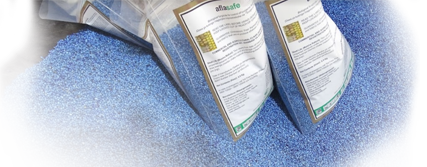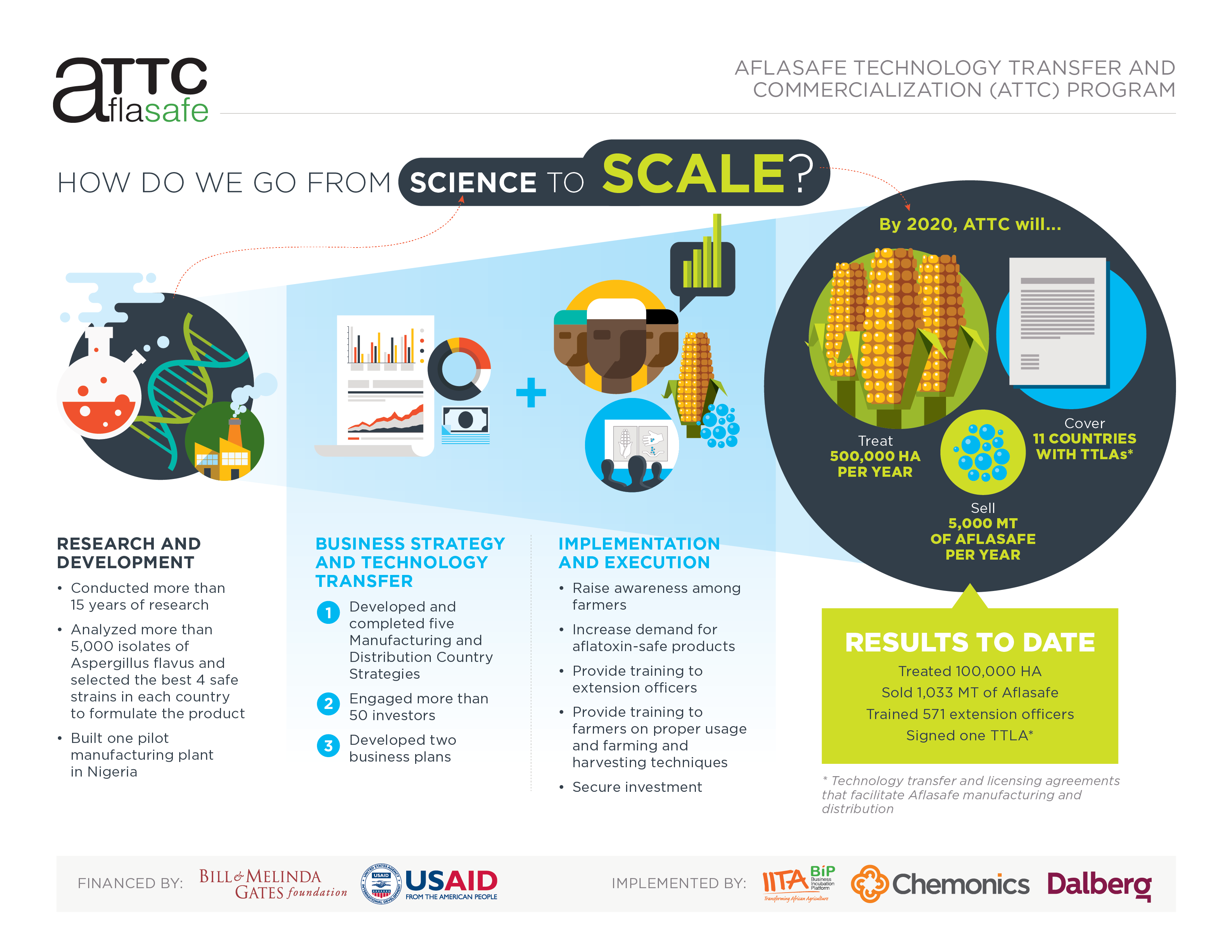Scientists work hard to come up with brilliant solutions to our problems – but how do we get those solutions to the people that need them on a large scale?
It’s a big question – and it is just what Aflasafe Technology Transfer and Commercialisation (ATTC) is working on. Years of careful research have refined Aflasafe into a powerful tool to the chronic problem of aflatoxin contamination, and proved that it works. ATTC is now at the leading edge, with innovative approaches to scaling out and commercialisation, and it offers an illustrative example of how to get solutions from shelf to shop, and lessons that can be applied to other technologies. These ideas got their international debut on 19th October 2017, at a panel discussion during the 2017 Borlaug Dialogue International Symposium in Des Moines, Iowa, USA, that covered ATTC’s dynamic design, how project partners work together to build successful public–private partnerships, and progress on goals. For all the details and the full background, skip straight to our press release.

“There are many great technologies being developed by research organisations, but we must change our thinking on how to get them to market,” said Mr Abdou Konlambigue, ATTC Managing Director. “We are realising that there is a vibrant private sector in Africa ready – and eager for opportunities – to play their due role.”
The Borlaug Dialogue is a prestigious event that brings together the luminaries of the food world. Attendees come from diverse disciplines – ranging from politics to science, and from funding to farming. The theme for 2017 was The Road out of Poverty, harnessing the power of approaching agriculture as a business.
“There is a tremendous momentum, with everyone across different organisations talking about agricultural transformation rather than agricultural development” said Mr Konlambigue. “We are seizing the moment and actively engaging in that discussion at both the global and Africa level.”
ATTC is implemented by the International Institute of Tropical Agriculture (IITA) in collaboration with Chemonics International and Dalberg Global Development Advisors. It is financed by the Bill & Melinda Gates Foundation, the United States Agency for International Development, and the CGIAR Research Program on Agriculture for Nutrition and Health.
The three implementing partners bring complementary expertise, each taking the lead for different stages in the process of going from science to scale. While IITA brings its research and development knowledge and the Aflasafe product itself, Dalberg Global Development Advisors craft strategies for each country and Chemonics International leads the practical implementation of those strategies on the ground. Another key aspect – in both session panellists and ATTC itself – is the inclusion of funders as an integral part of the team far beyond their financing role, providing advice, helping to steer the project and contributing to its success.
This infographic courtesy of Chemonics International illustrates the key steps in the scaling-out process – click to see at full size.
Aflatoxin is highly toxic, causing liver cancer, weakened defences against other diseases, and stunted growth in children. Cutting contamination in maize and groundnuts by between 80 and 100%, Aflasafe has the potential both to avert chronic health disasters and to create prosperity for millions of African farmers and entrepreneurs in the agriculture and food industries. In Nigeria alone, the negative economic and monetised health impact of aflatoxin in 2014 was a staggering USD 985 million (1.2% of total GDP). On the other hand, aflatoxin is invisible, making contaminated grain identical to safe grain, and easy to sell. This makes Aflasafe a challenging product to market, requiring innovation, adaptability and strategic thinking.

“The key to our approach is that we are looking directly at incentives,” said Mr Mario Kerby, Director, West Africa and Haiti at Chemonics International. “We are not interested in the dependency model of giving hand-outs to farmers, because it’s not sustainable. Instead we reach them through economics, and focus on key market segments to drive early adoption. The strategy in each country is different – for example, in Nigeria the biggest demand for aflatoxin-safe maize is from the poultry industry, where its use in feed gives a clear economic advantage. They have an interest in promoting Aflasafe and they act as our anchor buyers. On the other hand, in Senegal, it is exporters who are very keen to buy groundnuts that meet the strict standards of markets like the European Union, and our partners BAMTAARE Services are investing in a production plant. In the longer term, we are also working to raise awareness amongst farmers of the health and income advantages of Aflasafe.”
These private-sector partnerships not only ensure rapid and sustainable market growth, but also offer research organisations the possibility of diversifying their income streams. “We are crossing the divide between science and business, and in the end, everybody wins,” said Mr Kerby.
As we navigate this path to victory over aflatoxin, one of the key lessons has been the need to be adaptable and ready to seize opportunities as they emerge. Follow along with us on our journey at Aflasafe where I am, or find out more about our commercialisation strategy.











